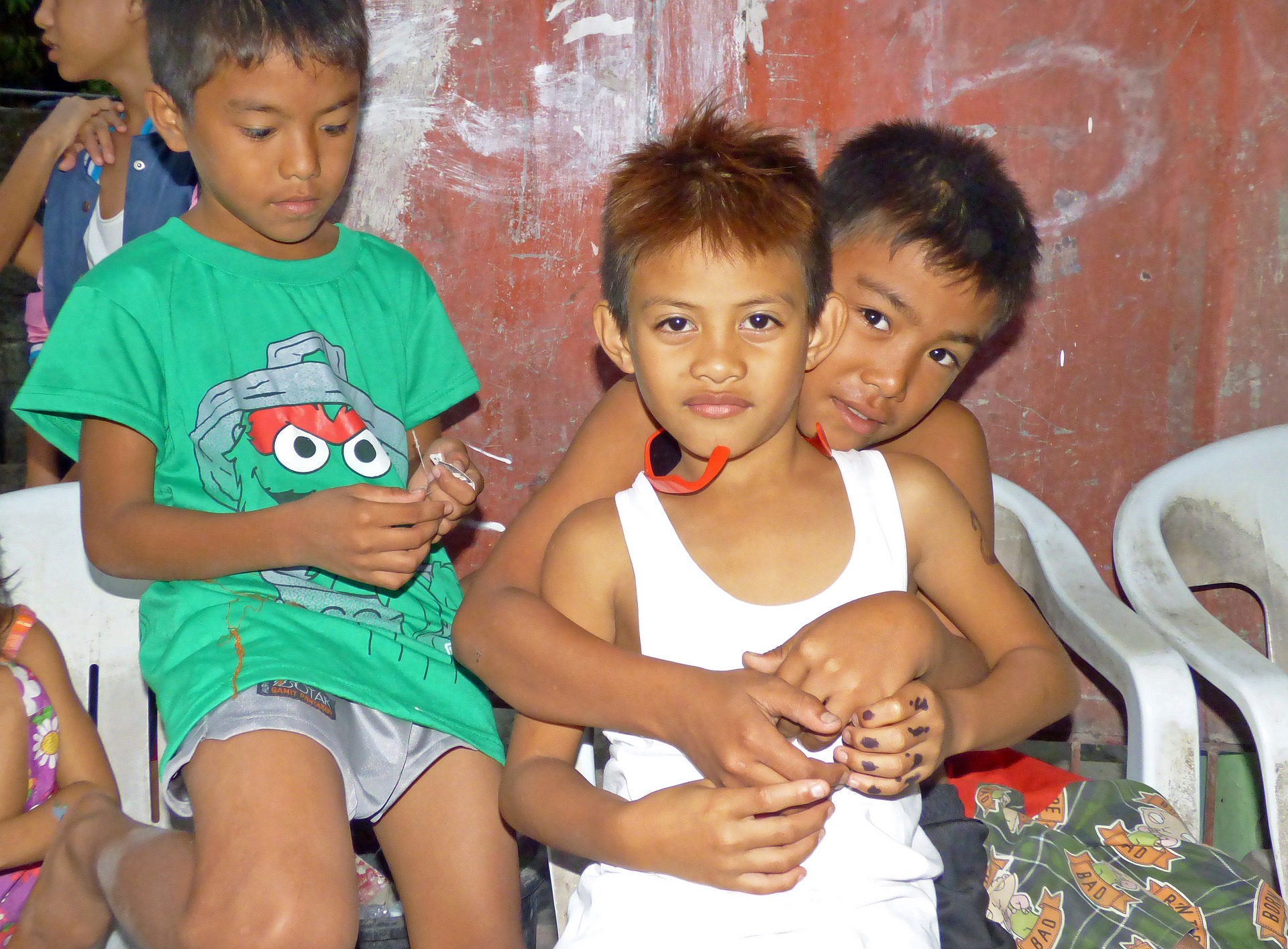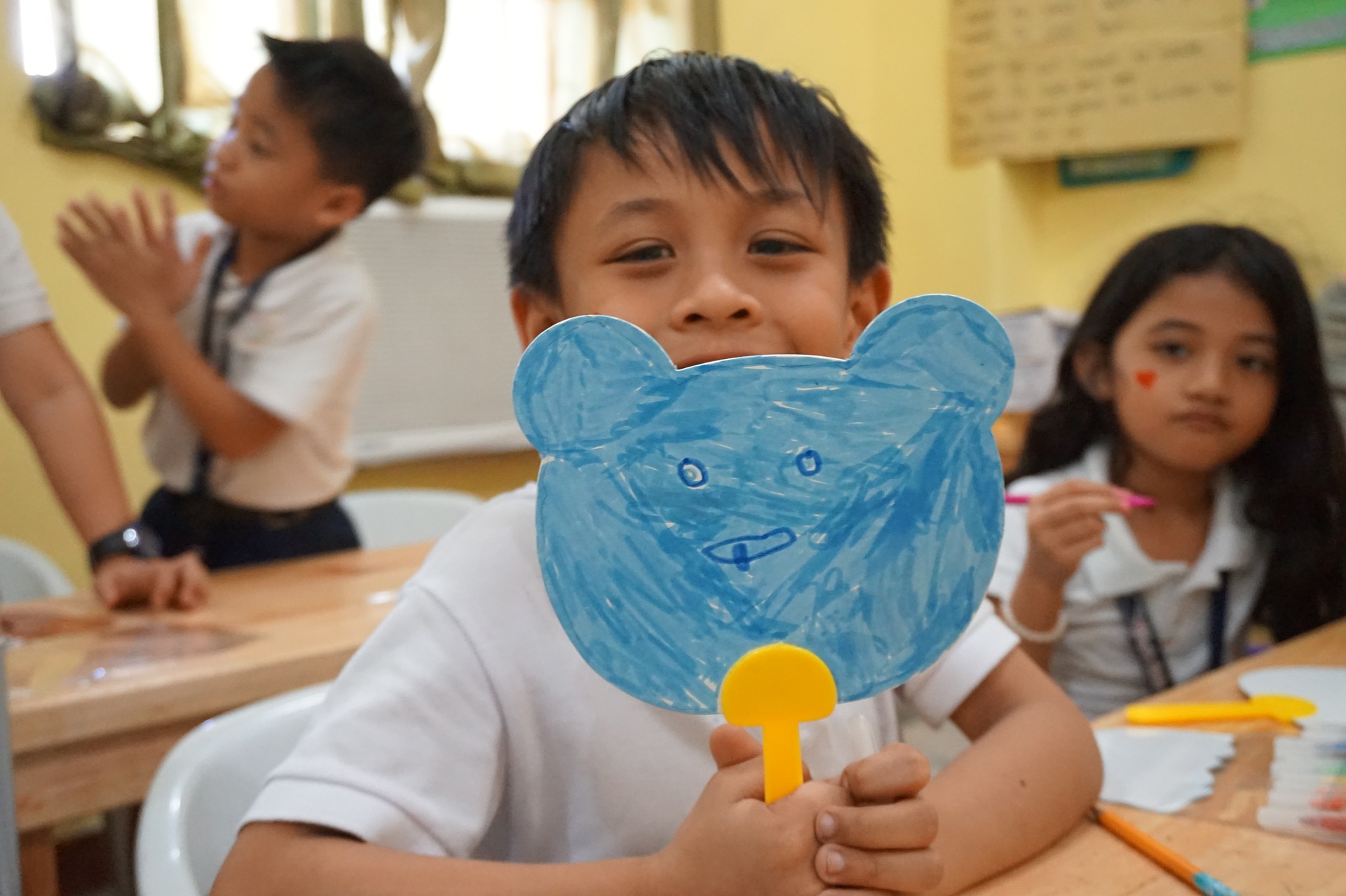
I have been in the Philippines for almost two years, and I recently had the honor of being named a godparent for a new little baby girl across the street. I am called Ninong, and my wife is Ninang. The little girl's name is Sabrina. In Filipino culture, godparenting is a very important aspect of life. Especially that the Philippines is a very religious country; godparents are needed in various occasions such as in weddings (sometimes called principal sponsors), baptismal, communion, or confirmation of a child. Being a godparent means you take the role of being a second parent to a child or a couple, being a guide carrying a responsibility to assist them emotionally, spiritually, or even financially. That has been one of the more positive parts of being here and being exposed to a different culture, with different customs and expectations.
In general, I’ve found that Respect for elders is practiced widely. In the Philippines even older sisters and brothers, aunts, uncles, etc. are respected and obeyed. Any person who is older than you is to be spoken to respectfully. Shocking for Americans but I like it. The flip side of that custom is that it allows many children to be taken advantage of because they may end up being kidnapped and used for horrible purposes because children are taught to follow the directions of all elders without question. I have seen my wife walk up to a batta (a small child) and start checking their hair for lice, especially if one of our kids is going to be playing with them… That would not be tolerated well in America, but it is common practice here.
I have also found that it is common for extended family to live together. In the Philippines, families are not so independent like in the U.S. They take care of one another and still feel “tied” to their adult family members. Many Filipinos work abroad and send back money to support an extended family. Family ties are much closer in the Philippines. This creates other big differences: In the States almost everybody works, husband and wife and even teenagers. In the Philippines, there are many adults who do not work. There is seldom a house with no one at home, and most houses are small, even the new ones that have just been built, so it is common for many family members to share a small space. We have a family of five and live in a new house that is about 500 square feet in size. That would be a tiny house indeed if it were in America.
The pace of life is different here; in some ways, it is like stepping into a time machine and going back to what the ‘50s looked and felt like. Americans are very busy and have a fast-paced agenda. Even children have a busy schedule with sports and lessons of various kinds. The Philippines is a much slower pace for many people. Even in the malls or any supermarket, the Filipinos walk so slow. Everything seems to move slowly in the Philippines, including cashiers or any business transaction. The business and government systems and processes are not streamlined nor seem to be concerned with the time. Most paperwork is done by hand. Filipinos are very good at waiting patiently, sometimes for hours. I’m not near as patient as they are, but I am learning.
Filipino culture is very sharing, especially more among the poorer people. I have even seen someone take the shoes off a neighbor’s porch without asking because they needed to borrow them to go somewhere. It is common for everyone’s slippers (flip-flops) to be left outside the front door, and so as you walk by the houses, you will usually see a pile of slippers outside the front or back door. If you walk by anyone, even strangers, who are eating, they will usually invite you to eat with them. People are not shy to borrow something, and people often feel obligated to share their resources. It’s not that Americans are not sharing, but there is such a difference in the culture. Americans are all so independent. Being independent and being responsible for yourself is stressed in America- it is in the culture. Americans often believe in the ‘tough love principle’ which means not helping someone, even a family member, so that they will learn to be responsible. Americans raise their children from a young age to be responsible and independent… this is not so in the Philippines.
I have found that In the Philippines the culture is very subtle, gracious, polite, pleasant, and non-confrontive. If anyone would speak a small hint of something negative about someone or something…it would speak volumes and would be heard loudly. Americans would generally miss the hint. I have asked my wife if she could point out the “in charge” person in a store, and she has politely but firmly told me that you couldn’t do that here. In America, people speak very directly and confrontative (and complain a lot), which is perceived by many Asian cultures to be often rude. Also, the culture in the Philippines is mostly very light-hearted and upbeat. You will see people smiling everywhere and being very friendly. They may have big problems or hardships, but they appear to be very happy. It’s part of the culture.
Almost everyone has a tablet or a phone here; even if they are too poor to live in a house, you will find that they still have some kind of portable electronic device. This phenomenon is true down to four and five-year-olds. I have a six-year-old niece whose English is ok (that is we can sort of understand each other most of the time) She knows all of the songs from the Disney movie Moana, and her English is perfect as she sings along with the phone or tablet that she has. One of the things that has amazed me during my time here, is that even if the female (yes, it is usually a girl) cannot speak any English to you, she still knows a whole bunch of songs that commonly play on the radio stations here, entirely from the U.S. and mostly from the late 70’s or early ’80s.
Philippine Boy Scouts start earlier than American Boy Scouts… the program is divided into five sections. Boy Scouts starts with KID Scouting (Kabataang Iminumulat Diwa) which is for boys 3 to 4 years old (in pre-school). They wear a light blue neckerchief. KAB Scouting (Kabataan Alay sa Bayan) is for boys 6 to 8 years old (grades 1 through 3). They wear a yellow neckerchief. Boy Scouting is for boys 9 to 12 years old (grades 4 through 6). They wear a green neckerchief. Senior Scouting is for boys 13 to 16 years old (grades 7 through 10). They wear a red neckerchief. Rover Scouting is for young men 17 to 25 years old (grades 11-12 and college level). Rovers aged 24 and above are called Rover Peers. They wear a navy blue neckerchief. Their Scout oath is: On my honor, I will do my best To do my duty to God and my country, The Republic of the Philippines, and to obey the Scout law. To help other people at all times, To keep myself physically strong, mentally awake, and morally straight.
Philippine Girl Scouts also starts earlier than American Girl Scouts. Their program is also divided into five sections. Twinkler Scout - ages 4 to 6 (Pre-school). Star Scout - ages 6 to 9 (Grades 1-3). Junior Girl Scout - ages 9 to 12 (Grades 4-6). Senior Girl Scout-ages 12 to 15 (Grades 7-10). Cadet Girl Scout-ages 15 to 21 (Grades 11-12 and Colleges). Their Scout Promise is: On my honor, I will do my duty: to God and my country; to help other people at all times; and to live by the Girl Scout Law.
Scouting was brought to the Philippines by American soldiers following their occupation of the country in the early 20th century. There were accounts of the presence of Boy Scouts in Manila as early as 1912. Plans of forming Scouting troops for Filipino boys came from Mrs. Caroline S. Spencer, an American widow doing charity works with the natives in Sulu with Lt. Sherman L. Kiser, a young second lieutenant assigned to arrange her transportation and accommodation for her charity work. Upon seeing small boys wandering aimlessly during one of their trips, Mrs. Spencer floated the idea of organizing Boy Scout troops to Lt. Kiser. The two discussed and planned the matter seriously, but because of Lt. Kiser’s reassignment to Zamboanga and Mrs. Spencer’s return to the United States, their plan in Sulu never materialized. In Zamboanga, Lt. Kiser observed the same aimless behavior of boys and decided to push their plan of forming Boy Scout troops. And so, the first Filipino troop consisting of 26 boys was formed on November 15, 1914. This troop was named Lorillard Spencer in honor of Mrs. Spencer’s son, who was a Boy Scout.
Perhaps I shall think of some more differences between America and the Philippines and share them with you as they happen to me while I’m living here. Please comment below if you have any questions.
